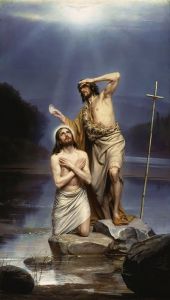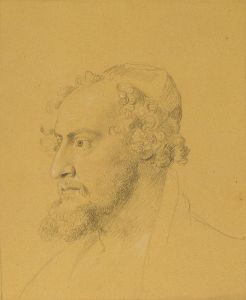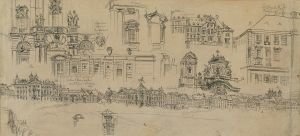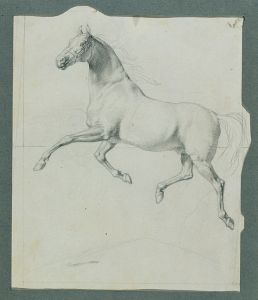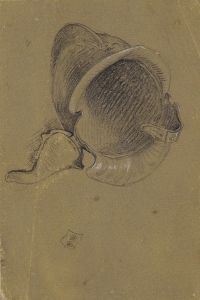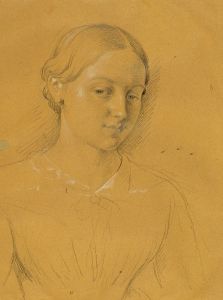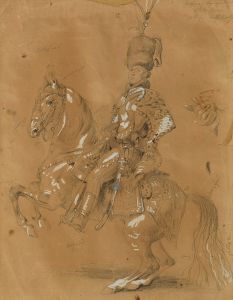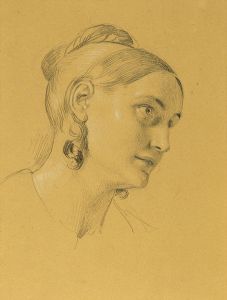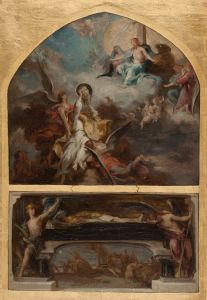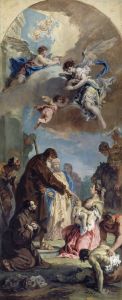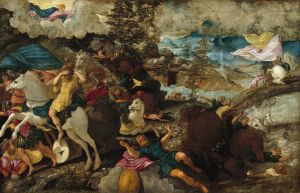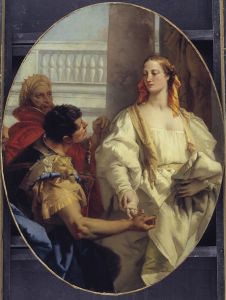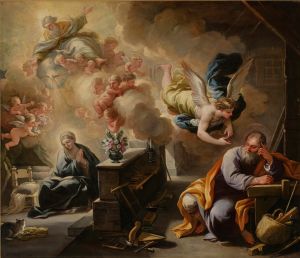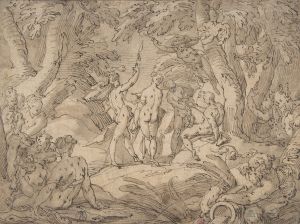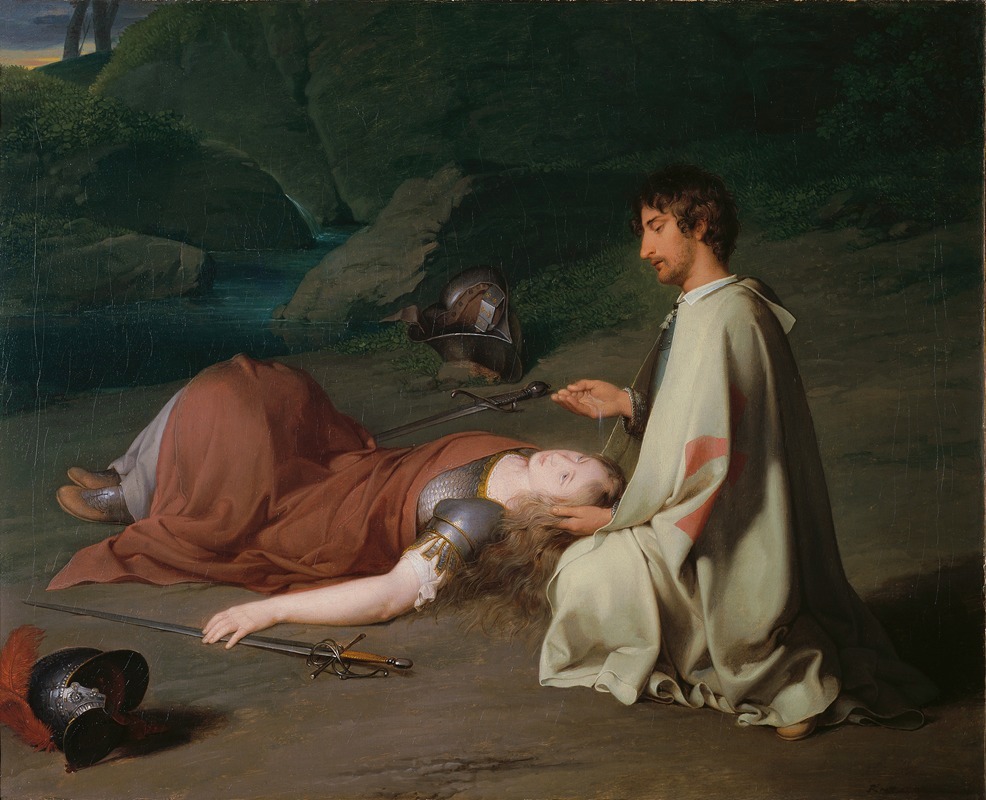
Chlorindens Taufe
A hand-painted replica of Johann Peter Krafft’s masterpiece Chlorindens Taufe, meticulously crafted by professional artists to capture the true essence of the original. Each piece is created with museum-quality canvas and rare mineral pigments, carefully painted by experienced artists with delicate brushstrokes and rich, layered colors to perfectly recreate the texture of the original artwork. Unlike machine-printed reproductions, this hand-painted version brings the painting to life, infused with the artist’s emotions and skill in every stroke. Whether for personal collection or home decoration, it instantly elevates the artistic atmosphere of any space.
Johann Peter Krafft was an Austrian painter known for his historical and genre scenes, as well as portraits. One of his notable works is "Chlorindens Taufe" (The Baptism of Clorinda), which is based on a scene from Torquato Tasso's epic poem "La Gerusalemme Liberata" (Jerusalem Delivered). This poem, published in 1581, is a romanticized account of the First Crusade, focusing on the Christian knights' efforts to capture Jerusalem.
"The Baptism of Clorinda" depicts a dramatic and emotional moment from the poem. Clorinda is a warrior woman of noble birth who fights for the Muslim side. In the story, she is mortally wounded in battle by the Christian knight Tancred, who is unaware of her identity due to her armor. As she lies dying, she reveals her identity to Tancred, who is devastated to learn that he has killed the woman he loves. In her final moments, Clorinda requests to be baptized as a Christian, and Tancred fulfills her wish, baptizing her with water from his helmet.
Krafft's painting captures this poignant scene with a focus on the emotional intensity and the dramatic interplay of light and shadow. The composition is centered around the figures of Tancred and Clorinda, with Tancred depicted in a posture of sorrow and reverence as he performs the baptism. Clorinda, though dying, is portrayed with a serene expression, suggesting her acceptance and peace in her final moments. The use of chiaroscuro enhances the emotional impact, drawing the viewer's attention to the central figures and their expressions.
Krafft's work is characterized by its attention to detail and historical accuracy, as well as its ability to convey deep emotion. In "Chlorindens Taufe," these qualities are evident in the careful rendering of the characters' costumes and armor, as well as the sensitive portrayal of their emotions. The painting reflects Krafft's skill in combining historical narrative with personal drama, a hallmark of his artistic style.
Johann Peter Krafft was born in Hanau, Germany, in 1780 and later moved to Vienna, where he became a prominent figure in the Austrian art scene. He studied at the Academy of Fine Arts in Vienna and was influenced by the works of classical and Renaissance masters. Throughout his career, Krafft received numerous commissions from the Austrian court and was appointed as a professor at the Academy. His works are celebrated for their narrative clarity and emotional depth, qualities that are exemplified in "Chlorindens Taufe."
Krafft's painting not only illustrates a key moment from Tasso's epic but also reflects the Romantic era's fascination with themes of love, heroism, and the supernatural. The story of Clorinda and Tancred, with its blend of historical and fantastical elements, resonated with the Romantic sensibilities of the time, making it a popular subject for artists and writers alike.
"The Baptism of Clorinda" remains an important work in Krafft's oeuvre, showcasing his ability to translate literary themes into visual art. It continues to be appreciated for its artistic merit and its evocative portrayal of a timeless story of love and redemption.





